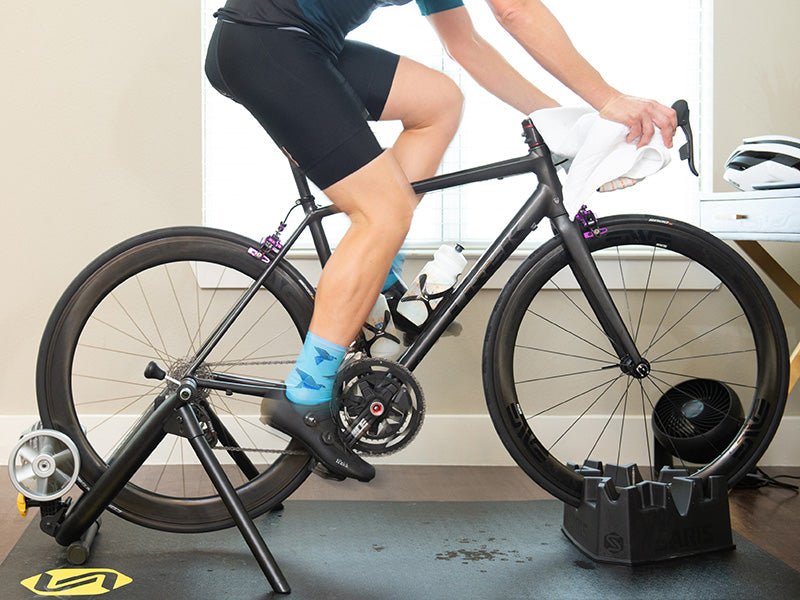Phone books. Old textbooks. If it's an object that can add height to your front wheel, then we've seen it used with one of our indoor bike trainers. This practice of elevating the front of the bike makes sense because it provides a very basic, yet important benefit – keeping your bike level.
So why choose a climbing riser block over a free phone book?
A climbing riser block does so much more than the alternative. Not only does it bring your front wheel level with the rest of the bike, it also keeps your front wheel secure – something that is very important when doing out-of-the-saddle efforts. A riser block will prevent your front wheel from turning back and forth when cranking away on a sprint, which means more power for your pedaling.
Each block comes with three different levels, and when you add a second block you unlock 12 different height options. Use any of these climbing configurations to recruit key muscles in the core, legs and arms that are used more while climbing - all while you practice and get familiar with good climbing form so you're ready for the real hills once you hit the outdoors.
Climbing Riser Block Height Configurations
Each measurement for the riser block configurations below is the height off the ground, and measured using a standard 700c road wheel.
Single Stacker
2.1" – 2.7" – 3.1"

Double Stacker
4.1" – 4.7" – 5.1"

Double Stacker with a Twist
6.35" – 6.95" – 7.35"

Double Backer
7.85" – 8.45" – 8.85"

